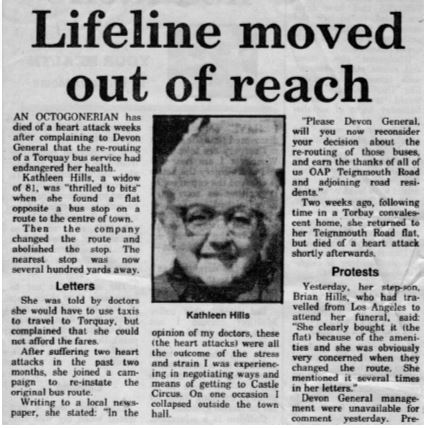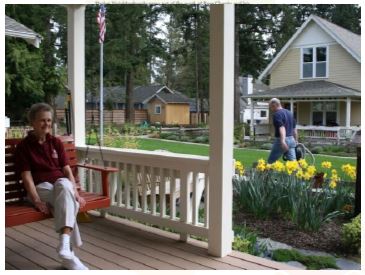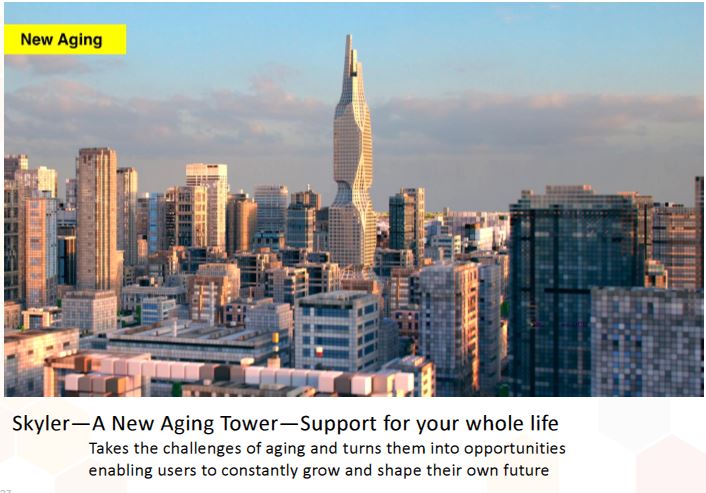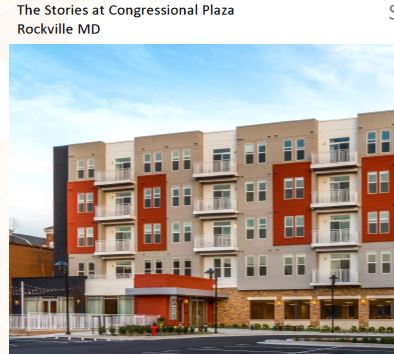AARP Hearing Center
HIVE Buzzes With Talk About Aging-Friendly Housing
By Melissa Stanton, October 24, 2016 09:15 AM

“Who here," she repeats, "is looking forward to moving to an active adult community?" A handful of hands are raised, accompanied by a chorus of laughter.
"Who's looking forward to living in an assisted-living facility?" she asks the crowd at the Hanley Wood-hosted event. No hands are raised.
"Who hopes to spend their last years in a senior nursing facility?"

Her point made, Susanka explains that for many current and future older adults, such grim options are the only option when age or infirmities make living alone or in one's current home no longer practical.
As a personal case in point, Susanka tells the story of her grandmother, Katherine Hills, who moved into a particular apartment building because of its proximity to a bus stop. When the bus stop was relocated, her grandmother's "lifeline" — as reported by the local newspaper (see image at right) shortly after the 81-year-old's death — "moved out of reach."
As the age-50+ population in the United States steadily increases, the housing stock and land-use policies of the past 50+ years are showing their age — and ageism. The vast majority of "senior citizens" do not seek to migrate southward for settling into an age-restricted (or "active-living") community. However, much of the housing in many of the nation's towns, cities and suburbs is essentially segregated by age. The reason for this is due to both internal and external factors that make a certain home or location best for either young singles or marrieds with children or older adults. The use of "or" is intentional because too many places are not suitable for people of all or at least varying ages.
"We have and are segregating our aging population from the vitality we can live in every day," says Susanka, noting that the vast majority of older adults want to age in place in their own home, yet only 50 percent think they'll actually be able to do so. "We have solutions for this, but the people who need those solutions don't know about them."

Noting that the housing, transportation and community needs and desires of young and older adults (aka: millennials and boomers) overlap in many ways — and "we're all going to age to a greater extent than ever before," Susanka asserts that we're living in a valuable, unprecedented moment worthy of "intergenerational value creation."
Susanka is the author of The Not So Big House and founder of the “Not So Big” series that explores how the quality of our living spaces matters more than the size of the spaces. Joining in her session, "Reinventing Our Homes and Communities for Aging Independence,” were fellow architects Matthias Hollwich (author of the book New Aging: Live Smarter Now to Live Better Forever) and Ross Chapin (author of Pocket Neighborhoods: Creating Small Scale Community in a Large Scale World ).
Also serving as panelists were developer Ryan Frederick, CEO of SmartLiving360, and Rodney Harrell, AARP director of Livability Thought Leadership. All agreed about both the value of intergenerational communities and that marketing to an over 65 market or for aging can be "the kiss of death" for a development project or community plan.

"Even the over 65 don't want to be in an over 65 community," says Susanka.” Builders, planners and local leaders must market to intergenerational audiences — and that's a good thing.
Ross Chapin, an architect well-known for his concept of "pocket neighborhoods," which feature small single-family homes build around a shared and centralized green space, has found that the communities he designs are sought after by both young families and empty nesters.
Architect Matthias Hollwich sees apartment buildings as great venues for multi-family, intergenerational living. So much so, that he’s developed a conceptual prototype he calls Skyler, a 600 residential unit apartment tower that could be occupied by 1,000 people. In Hollwich’s vision, tailored amenities are placed throughout the building, which offers “a mix of micro studios to maximize economy, pooled apartments that eliminate isolation and duplexes that act as single family homes.” He imagines people of all ages living cooperatively and sharing amenities including transportation and workspaces.
Ryan Frederick of SmartLiving360 has been developing rental apa

rtment buildings that, while marketed to a broad audience, work especially well for older adults because the units are created using universal design features, meaning that the apartment itself is suitable for a resident of any age or ability.
"The model of having older adults live in a place like a Shady Acres did work for a number of years, but it doesn't work anymore,” he noted at HIVE. As stated on the company’s website, SmartLiving360 believes that “living environments should be far more than a place to hang your hat; they should inspire us, create true community and adjust as our needs change.” In support of the company’s mission, the buildings offer a menu of concierge services that residents can access when or if needed.
Rodney Harrell of AARP praised the range of ideas because, as he noted, “one solution can't fit everyone, so people need a range of options for how and where can live as older adults.”
To achieve that, Chapin wondered aloud whether it’s time to borrow from or expand the concept of Complete Streets (a policy that calls for roadways to be safe for all users). “What we really need are 'Complete Communities,'” he says. “Livable communities for people of all ages that have the housing, transportation and other services we all need."
Related: A HIVE conference winner: "Two Houses in One for a Home Within a Home"
Photo credits: The images shown are from Sarah Susanka's presentation at HIVE 2016
Melissa Stanton is the editor of AARP.org/livable and the award-winning AARP Livable Communities E-Newsletter.

YOU MAY ALSO LIKE
Visit AARP.org/SharingLivableSolutions to tell us about where you live and what your community is doing to be livable for people of all ages.
Stay informed and get inspired by subscribing to the free AARP Livable Communities e-Newsletter.































































